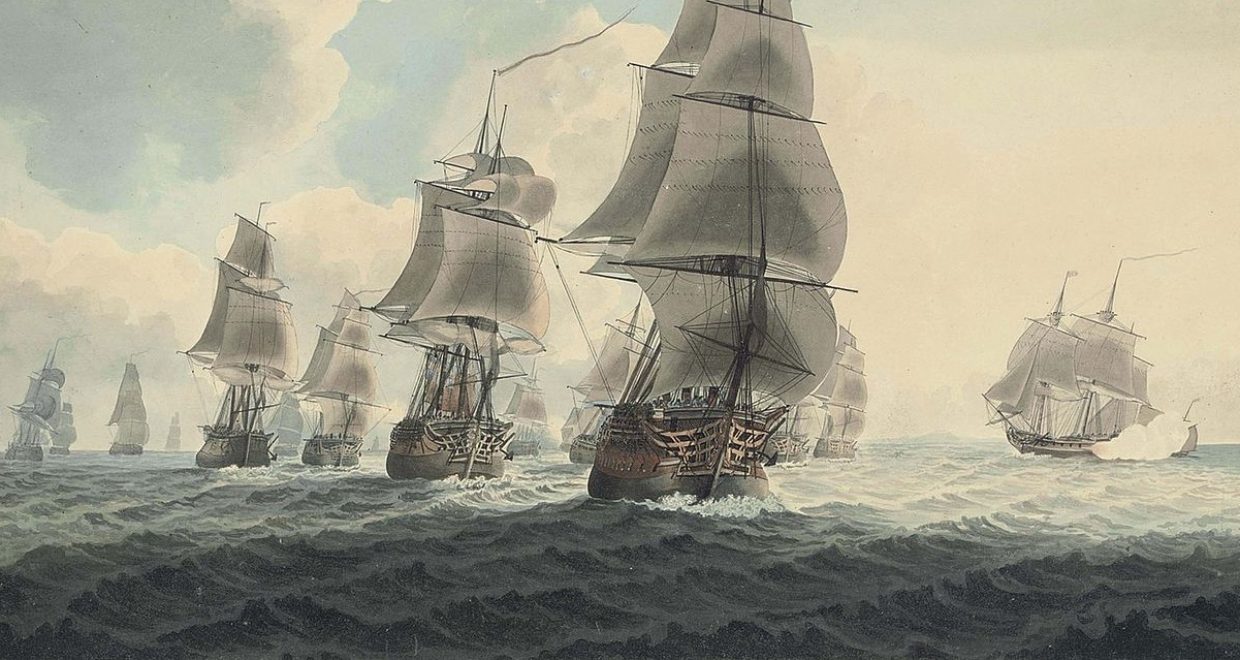When subjecthood and citizenship did not matter: the Royal Navy and foreign seamen in the Revolutionary and Napoleonic Wars
This blog accompanies Sara Caputo’s Historical Journal article Alien Seamen in the British Navy, British Law, and the British State, C. 1793 – C. 1815.
Eighteenth-century Britain was not, by contemporary and especially present-day standards, a legally difficult place for immigrants to settle. Aliens could not own land or ships or hold office, and had to pay higher customs dues if trading, but there was no restriction on movement, inheritance, residence, or marriage. Even in times of war, ‘Aliens Acts’ tightened controls and impinged on individual freedoms, but did not introduce formal, systematic obstacles to entry or permanence in the country. As always, ‘useful’, skilled categories were those who faced the fewest difficulties. During peacetime, restrictions existed on the numbers of foreign sailors who could be employed in the merchant service, capped at one quarter of each crew. In wartime, however, the enormous needs of the Royal Navy, absorbing a vast proportion of valid British hands, forced the state to lift this to three quarters.[1] If a good seaman wished to join the Navy, moreover, he was generally most welcome. After two years of service, in the Navy or in merchantmen during wartime, a foreign sailor was to ‘be deemed and taken to be a natural-born Subject’.[2]
Of course, nominal restrictions existed in the case of enemies. In multiple occasions, during the 1793-1815 Revolutionary and Napoleonic Wars, the Admiralty instructed captains and admirals to recruit seamen from neutral countries, by all means, but not Frenchmen, or, when at war with their homelands, Dutchmen or Spaniards. In practice, however, this rule was often broken, and the Board of Admiralty’s very directions occasionally contradictory. An able seaman was an extremely valuable commodity, particularly at a time when Britannia ruled the waves, and kept over 300 warships of sloop size and above at sea.[3] Between 110,000 and over 140,000 men, with some variations from year to year, were employed by the Navy at any given time throughout the Revolutionary and Napoleonic Wars, except for the initial and final years.[4] Clearly a small country with a population of just under 11 million in Britain, and around 5 million in Ireland,[5] and burgeoning merchant and fishing trades, saw its resources stretched to the limit. Birthplace and legal subjecthood, then, came to matter relatively little for recruitment purposes.
They also came to matter little in the opposite scenario, when they would have been helpful affording a man protection, and shielding him from naval service. The Royal Navy counted among its recruitment methods the infamous practice of ‘impressment’, or forceful conscription of skilled seamen. Whilst in theory, by an Act of 1740, foreigners were a protected category, in practice press gangs were often indiscriminate in their seizures. Not all alien seamen pressed into the service would then have the competence or opportunity to complain with their own consul and obtain release. The most famous example are Americans, whose systematic impressment was one of the precipitating factors of the War of 1812, but men from other countries were also forced into the service. In this case, too, the wartime necessities of a state thirsting for manpower trumped the conventional value of legal subjecthood.
In short, whether foreign seamen were willing to join the British Navy or on the contrary wished to avoid it, the legal barriers to their entry that citizenship or subjecthood may have constituted were easily forgotten or bypassed. A state in need readily discarded the very labels that states are made of.
——
Read Sara Caputo’s Historical Journal article for free here Alien Seamen in the British Navy, British Law, and the British State, C. 1793 – C. 1815
[1] Lawrence A. Harper, The English Navigation Laws: A Seventeenth-Century Experiment in Social Engineering (New York, 1939).
[2] This rule was first established by statute in 1707, and was still valid by the end of the century.
[3] The figure for 1804 is 318. See: N. A. M. Rodger, The Command of the Ocean: A Naval History of Britain, 1649-1815 (London, 2004), pp. 615-17.
[4] Ibid., p. 639.
[5] Population. Comparative Account of the Population of Great Britain in the Years 1801, 1811, 1821, and 1831 (House of Commons, [1831?]), p. 6; Cormac Ó Grada, ‘The Population of Ireland 1700-1900: A Survey’, Annales de démographie historique (1979), pp. 281-99 at p. 283.
Main image: A squadron of the Royal Navy running down the Channel and An East Indiaman preparing to sail, Attributed to Samuel Atkins





